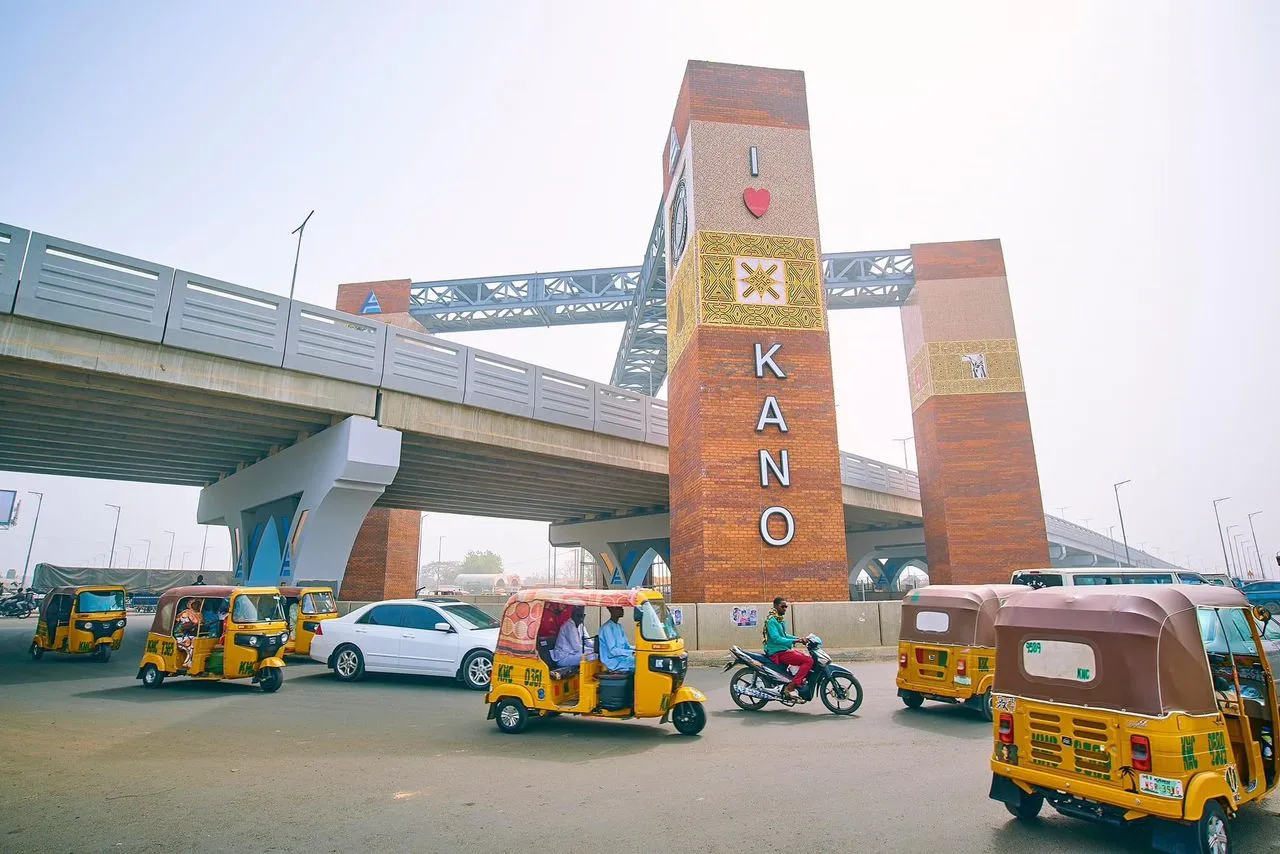As of 2025, the estimated population of Kano State stands at approximately 16,253,549. This marks an increase of about 142,250 people compared to the previous year, 2024, when the population was around 16,111,299. Kano remains one of the most densely populated states in Nigeria, reflecting its steady demographic expansion.
Table of Contents:
Historical Population Growth in Kano State
Since its establishment in 1967 from the former Northern Region, Kano State has experienced remarkable population growth. Initially, official records of its population were scarce. However, subsequent censuses highlighted significant increases in the number of residents over the years.
In 1991, Kano’s recorded population was 5,810,470, a significant rise from previous estimates. By 2006, this figure had surged to 9,401,288, reflecting a robust growth rate of about 61.8% over 15 years, solidifying Kano’s status as one of Nigeria’s most populated states.
By 2016, the National Bureau of Statistics projected the population at approximately 13.4 million, demonstrating continued demographic expansion. By 2022, Kano’s population had grown to about 15,462,200, marking an increase of 64.5% since the 2006 census. The trend persisted into 2024, with a population estimate of 16,111,299, and as of early 2025, the figure had reached 16,253,549, with an annual growth rate of 3.27%.
Several factors contribute to Kano’s increasing population. A high fertility rate significantly drives this growth, with many families having multiple children. Additionally, migration from other regions due to Kano’s economic opportunities, cultural significance, and commercial viability has fueled population expansion.
Moreover, the traditional lifestyle of the predominant Hausa and Fulani ethnic groups promotes large family sizes, further reinforcing the state’s demographic trends. However, rapid population growth presents challenges, including economic disparities, maternal and child health issues, and security concerns in certain areas.
Population Distribution by Local Government Area (LGA)
Kano State is divided into 44 Local Government Areas (LGAs), each with varying population densities. Below is an estimated breakdown of the population for each LGA in 2025:
| No | Local Government Area (LGA) | Population Estimate (2025) |
|---|---|---|
| 1 | Ajingi | 288,900 |
| 2 | Albasu | 315,600 |
| 3 | Bagwai | 270,700 |
| 4 | Bebeji | 320,800 |
| 5 | Bichi | 465,900 |
Demographic Profile of Kano State in 2025
Age Distribution
| Age Group | Percentage | Estimated Population |
|---|---|---|
| 0-14 years | 45% | 7,314,092 |
| 15-24 years | 20% | 3,250,710 |
| 25-54 years | 25% | 4,063,387 |
| 55 years and older | 10% | 1,625,355 |
Gender Distribution
| Gender | Percentage | Estimated Population |
|---|---|---|
| Female | 51% | 8,283,000 |
| Male | 49% | 7,970,549 |
Ethnicity and Language
| Ethnicity Group | Percentage |
|---|---|
| Hausa | 70% |
| Fulani | 20% |
| Other Ethnic Groups | 10% |
Predominant Languages
| Language | Usage |
|---|---|
| Hausa | Widely spoken |
| Fulfulde | Common among Fulani |
| Other Languages | Present in smaller communities |
Religious Composition
Kano State has a predominantly Muslim population, with a smaller percentage practicing Christianity.
| Religion | Percentage |
|---|---|
| Islam | 93.7% |
| Christianity | 6.3% |
Urban and Rural Population Distribution
A significant portion of Kano State’s population resides in urban areas, with the capital city, Kano, serving as the economic and cultural hub.
| Population Type | Percentage | Estimated Population |
|---|---|---|
| Urban | 60% | 9,751,000 |
| Rural | 40% | 6,502,549 |
Socioeconomic Challenges
Despite Kano’s impressive growth, challenges persist. Issues such as poverty, unemployment, and infrastructural deficits require attention to ensure sustainable development. Additionally, healthcare access and security concerns remain significant considerations for policymakers and residents alike.

